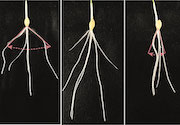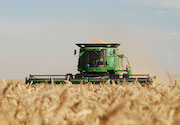| |
| |
 |
 |
| |
 |
|
@{mv_date_MMM d, yyyy}@ |
|
| |
 AAFC biologist Dan MacEachern and his team, along with AAFC barley breeder Raja Khanal, help support the development of new wheat and barley crops that grow best in Atlantic Canada.
» Read more...
AAFC biologist Dan MacEachern and his team, along with AAFC barley breeder Raja Khanal, help support the development of new wheat and barley crops that grow best in Atlantic Canada.
» Read more...
Ben Rosser, OMAFRA corn specialist, has added another article to his series on corn fertilization while taking into consideration higher-than-usual input costs and uncertain availability.
» Read more...
The federally and provincially managed whole-farm risk management tool helps producers protect their operation from large margin declines that may threaten the viability of their farm.
» Read more...
|
| |
|
| |
 Improved standability is a major objective for barley breeders like the University of Saskatchewan’s Aaron Beattie. But what is the best way to evaluate lodging susceptibility in breeding lines when the weather doesn’t favour lodging, especially given the difficulty of assessing root characteristics? A three-year project aims to develop easy-to-use tools to assess breeding lines for their lodging potential.
» Learn more...
Improved standability is a major objective for barley breeders like the University of Saskatchewan’s Aaron Beattie. But what is the best way to evaluate lodging susceptibility in breeding lines when the weather doesn’t favour lodging, especially given the difficulty of assessing root characteristics? A three-year project aims to develop easy-to-use tools to assess breeding lines for their lodging potential.
» Learn more... |
| |
 Pushing yields up to 100 bushels per acre is pretty satisfying. But does it pay? Research has shown that between the 1950s and the early 1990s, the rate of yield gain in CWRS wheat was about 0.35 per cent increase per year. From the early 1990s to 2013, that rate of gain had increased to 0.67 per cent per year. The increase was attributed to a combination of better genetics and more intensive management.
» Learn more...
Pushing yields up to 100 bushels per acre is pretty satisfying. But does it pay? Research has shown that between the 1950s and the early 1990s, the rate of yield gain in CWRS wheat was about 0.35 per cent increase per year. From the early 1990s to 2013, that rate of gain had increased to 0.67 per cent per year. The increase was attributed to a combination of better genetics and more intensive management.
» Learn more... |
| |
|
| |
 For most farms, the goal is to maximize the overall profitability of the farm in a tax efficient manner. The three traditional business structures — sole proprietorship, partnership and corporation — all have different nuances that need to be evaluated in the context of your individual farm. By doing so, you can determine how each one will impact your overall taxation, succession and estate planning objectives and choose the one that’s right for you.
» Read more
For most farms, the goal is to maximize the overall profitability of the farm in a tax efficient manner. The three traditional business structures — sole proprietorship, partnership and corporation — all have different nuances that need to be evaluated in the context of your individual farm. By doing so, you can determine how each one will impact your overall taxation, succession and estate planning objectives and choose the one that’s right for you.
» Read more |
| |
|
| |
|
|
| |
| |






